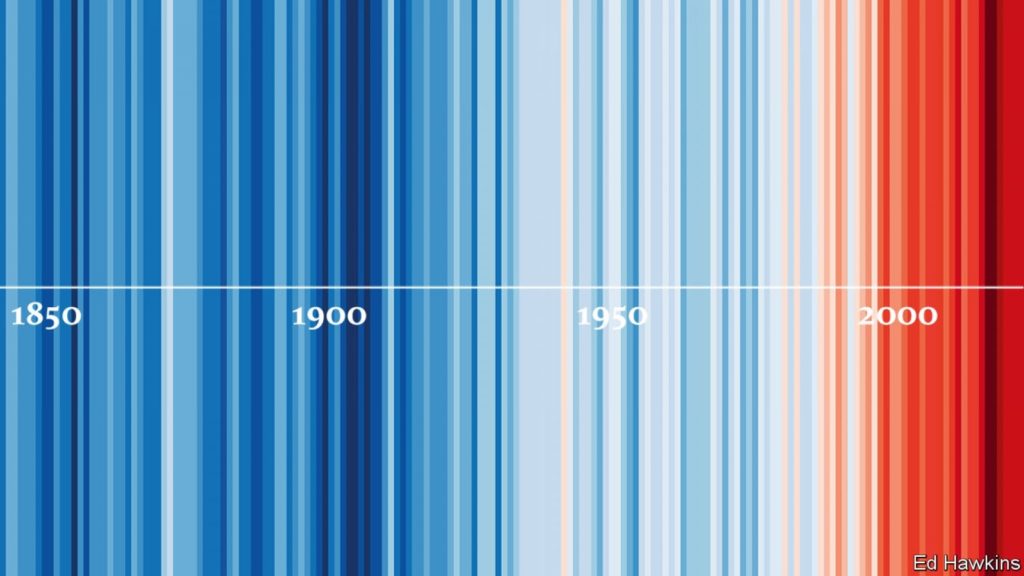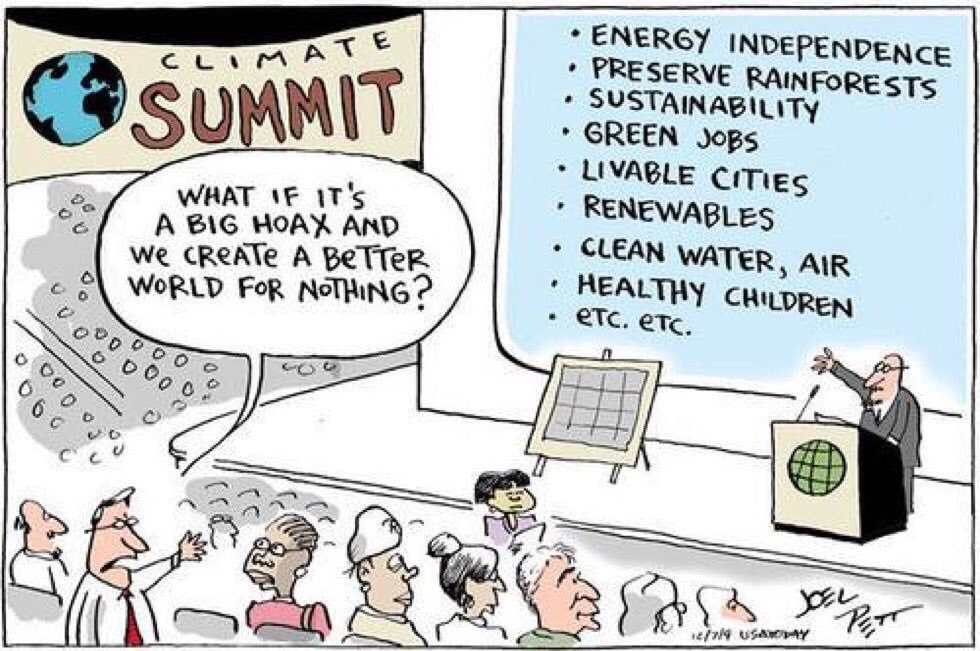Climate change touches everything this newspaper reports on. It must be tackled urgently and clear-headedly

From one year to the next, you cannot feel the difference. As the decades stack up, though, the story becomes clear. The stripes on our cover represent the world’s average temperature in every year since the mid-19th century. Dark blue years are cooler and red ones warmer than the average in 1971-2000. The cumulative change jumps out. The world is about 1ºC hotter than when this newspaper was young.
To represent this span of human history as a set of simple stripes may seem reductive. These are years which saw world wars, technological innovation, trade on an unprecedented scale and a staggering creation of wealth. But those complex histories and the simplifying stripes share a common cause. The changing climate of the planet and the remarkable growth in human numbers and riches both stem from the combustion of billions of tonnes of fossil fuel to produce industrial power, electricity, transport, heating and, more recently, computation.
Read more at The Economist:
https://www.economist.com/leaders/2019/09/19/the-climate-issue
Epilog by Bergensia
Do you trust the Economist?
You may not trust the climate activists whether they are young or old.
You may not trust the science that the climate activist tells you to listen to. You may not trust the international organizations like the United Nations. You may think the Paris Agreement is a scam.
If you trust the Economist, what can you do?





38 Comments
Pingback: bird chirping
Pingback: เพิ่มวิวไลฟ์สด
Pingback: OXBet
Pingback: แกนกระดาษ
Pingback: ร้านสักปาก สีลม
Pingback: Buy XD-M® ELITE 4.5″ 9MM HANDGUN Online
Pingback: ซื้อทราย หาดใหญ่
Pingback: ระหว่าง MM88BET กับ LSM99 จะเลือกเล่นเว็บไหนดี?
Pingback: PGSLOT โบนัสแตกง่าย ไม่มีโกง
Pingback: Nexus Market
Pingback: Online Casinos in Canada with $1 Deposit
Pingback: Gifts
Pingback: genie168
Pingback: เว็บเชียร์บอล Cheerball เปิดให้บริการอะไรบ้าง ?
Pingback: deals
Pingback: https://erckw.com/pocket-option-trader-a-comprehensive-guide-to/
Pingback: https://evs.lmms.io/forum/viewtopic.php?t=28750
Pingback: pg168
Pingback: click here
Pingback: คลินิกจัดฟัน ฉะเชิงเทรา
Pingback: ayurveda retreat
Pingback: ร้านเค้กวันเกิดใกล้ฉัน
Pingback: heng678
Pingback: เว็บตรง สล็อต บาคาร่า
Pingback: บ้านพักคนชรา
Pingback: สั่งของจากจีน
Pingback: ร้านตัดแว่นสายตา ใกล้ฉัน
Pingback: ศัลยกรรมตาสองชั้น
Pingback: เน็ต บ้าน ais
Pingback: 7 plus slot สมัครสมาชิกง่าย
Pingback: Sagame66 เข้าสู่ระบบ
Pingback: ธุรกิจครอบครัว
Pingback: ซื้อเหล้าออนไลน์
Pingback: ครูเกอร์
Pingback: รับงานเอง
Pingback: Best Tailor in Bangkok
Pingback: Go X app
Pingback: uspin88